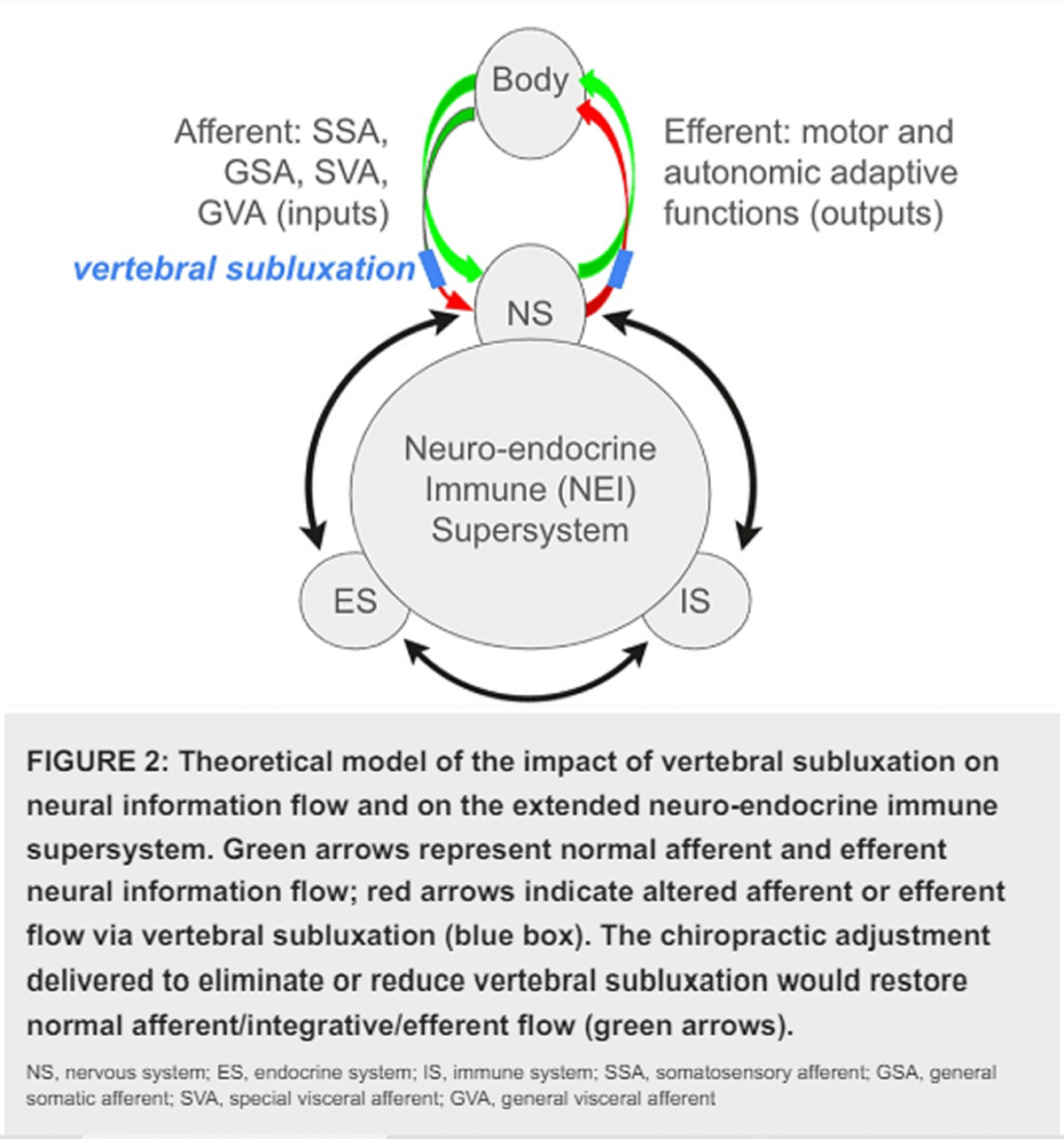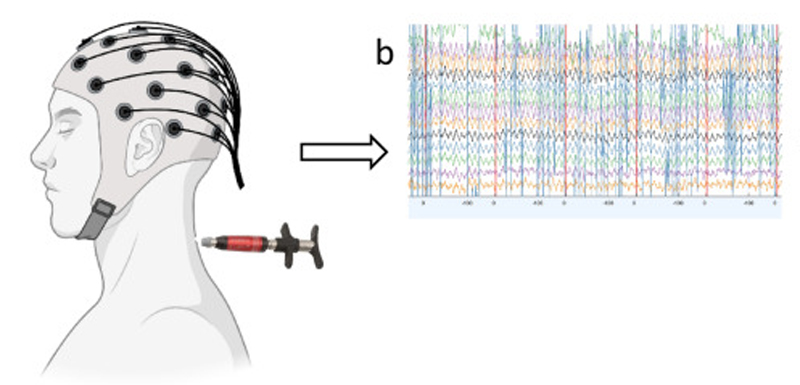Dump Subluxation? Give Me a Break!
SOURCE: Dynamic Chiropractic
By William Meeker, DC, MPH, FICC
President of Palmer College of Chiropractic West,
and former director of the Palmer Center for Chiropractic Research
The front-page headline of the September issue (volume 13, no. 12) of the Chiropractic Journal reads “Research Conference Urges Profession to Dump Subluxation.” (Ed: No longer available online) Well, I’m here to tell you that nothing even remotely of the kind happened, and I still find it hard to understand why one person, Matthew McCoy, chose to spin the story so inaccurately, especially after (silently) sitting through only one morning of an extensive three-day meeting (the Research Agenda Conference, aka RAC 4) at my invitation (and Palmer’s expense). A responsible journalist who didn’t hear the whole story would have checked not only his facts, but his context as well.
For example, McCoy took me to task for not defending a “hapless Palmer grad.” This person turned out to be Dr. Chuck Henderson, a graduate of Western States Chiropractic College and a member of the faculty at the Palmer Center for Chiropractic Research. Dr. Henderson doesn’t need my help; he does quite well on his own, thank you. Dr. Henderson is currently being funded by the Foundation for Chiropractic Education and Research for a $250,000 study of the effects of spinal subluxation in rats. (Ed. NOTE: This FCER grant led to the publication of 4 very important subluxation studies.) [1-4] The Palmer Center for Chiropractic Research has many other projects that focus on subluxation, health and adjustments, but I’ll save those descriptions for another column.
We’re not talking responsibility here, and we certainly aren’t talking journalism. What we are talking about is the artificial creation of intraprofessional fighting. If external forces seem beyond our control, why not start some altercations closer to home? It’s a heck of a lot easier, but why? What I have come to understand, after my first shock of disbelief at being so thoroughly and deliberately misrepresented, and after having so many of my colleagues assume that McCoy’s version was accurate, is that one easy way to build up a position is with negativity. Henry Kissinger’s memoirs make the point that Nixon knew very well how to politically help himself by defining his enemies’ positions for them, regardless of their true positions.
McCoy and his holier-than-thou cronies are trying to make a lot of hay by building themselves up as self-appointed saviors of the profession. They are trying to do this by skewing the description of a discussion most chiropractors have had many times over a couple of drinks with their chiropractor friends. I am talking about the deep, introspective discussions regarding the nature of this wonderful profession.
What causes subluxation? Exactly how does it cause nerve interference? What kinds of adjustments work the best, and why? How do adjustments work, anyway? Does any of that really matter in practice? What should our science address, and how should we do it with such limited resources? Why are there so many chiropractic techniques out there, each with its own method of measuring a subluxation? The discussion at the conference was simply more formal, more academic and more public, as it should be. Professional progress demands answers to these questions.
No one at this meeting ever seriously suggested – not once – that the subluxation be summarily “dumped” without examination. But one of the questions was, what happens if science and research can’t get a handle on the subluxation as we currently conceive it? What if, even with our best efforts, we can’t prove it? Could we change the way we scientifically view subluxation? Sure, that’s what scientific theory development is all about, as Ian Coulter eloquently pointed out. Read your chiropractic history. D.D. Palmer certainly changed his views during his lifetime, and so did B.J.
What if we couldn’t prove the subluxation? I didn’t hear a single voice urging that to happen, particularly those unfairly singled out by McCoy. Not a single person said that the chiropractic profession without subluxation would be a good thing. Many had grave doubts about it surviving such a depressing debacle. But what if it happened? Could the profession survive? Well, more likely yes than no. A majority of participants at the meeting thought it would survive because our patients wouldn’t allow us to just give up. There’s just too much at stake for their quality of life.
If some group in our profession wants to create enemies because they can’t handle the thought, that’s fine, but I am not going to apologize for, or defend this conference for, dealing with the really hard scientific issues the way they need to be dealt with. Subluxation is too important to this profession. I think thoughtful chiropractors will agree it’s about time we stopped shoving challenges to the concept under the rug. We need even more dialogue on this topic, as fearful as that might be to some.
There should be no shame or fear in intellectual integrity: it is an antidote for hypocrisy and professional hubris. Curiousity about the unknown is the starting point for all scientific exploration. The truth is that subluxation is a concept in need of operational definition, description, explanation and predictability. That defines good theory. Read any of the excellent textbooks written by chiropractors on subluxation, and they all say the same thing. Good theories are always subject to refinement and evolution as more is learned.
I believe in chiropractic as a practice and a profession. I am convinced that research on the subluxation and the chiropractic clinical encounter will lead to fascinating neurophysiological, bioengineering and psychological insights that will help mankind even more than we currently do. So do a lot of other people who attended this conference, and that is what the positive and thoughtful discussion of RAC IV was all about. If that bothers some people, you might want to check their level of belief in chiropractic, not the ones who have dedicated their professional lives to chiropractic research, suffering risks and personal attacks to obtain the recognition and resources for our profession’s scientific development.
REFERENCES:
- Degenerative Changes Following Spinal Fixation in a Small Animal Model
J Manipulative Physiol Ther 2004 (Mar); 27 (3): 141–154 - Introducing the External Link Model for Studying Spine Fixation and Misalignment: Part 1— Need, Rationale, and Applications
J Manipulative Physiol Ther 2007 (Mar); 30 (3): 239–245 - Introducing the External Link Model for Studying Spine Fixation and Misalignment: Part 2, Biomechanical Features
J Manipulative Physiol Ther 2007 (May); 30 (4): 279–294 - Introducing the External Link Model for Studying Spine Fixation and Misalignment: Current Procedures, Costs, and Failure Rates
J Manipulative Physiol Ther 2009 (May); 32 (4): 294–302
You may also want to review our:
* William Meeker, D.C., M.P.H., is president of Palmer College of Chiropractic, West Campus, in San Jose, California, and was the former director of the Palmer Center for Chiropractic Research. He was the principal investigator for the Consortial Center for Chiropractic Research and a member of NCCAM’s national advisory council.





It isn’t even a question anymore of “do chiropractic subluxations exist” it’s more a question of “is there any scientific evidence on whether they significantly matter in health or even in just dealing with pain states?” Most of the evidence says they are nowhere near as significant as classical chiropractic theory suggests.
It took several years but the CCE finally did exactly what this article opposed, it dumped subluxation! And our profession will be much better off without it!
Subluxation is tantamount to “The whole world is wrong but Chiropractors are right”. In science, when you postulate that something is the cause of a disease, and once removed, the disease is cured. This has to be backed up by giving that “something” to another individual will cause the same disease. Chiropractors have never caused a subluxation and caused a disease! I can take a cholera bacteria from one patient and give it to another and cause patient #2 to contract cholera.
When the term is universally used and has a universally accepted definition, we can revisit using the term subluxation in our lexicon.
Hi Alan
I’m glad you got that off your chest.
But don’t forget…the CCE is a political organization, and is wont to do what politicians usually do.
Now, all you have to do is enroll all our researchers to turn their back on their valuable research into how and why the subluxation does what it does, and you’ll get your wish.
While you are waiting, if you truly doubt that a subluxation can have an adverse impact on your health, I’d be happy to have you sign a release, and then we can experiment on misaligning your Atlas, to see how that effects your health.
I guarantee you that neither philosophy nor nocebo will have anything to do with what happens next.